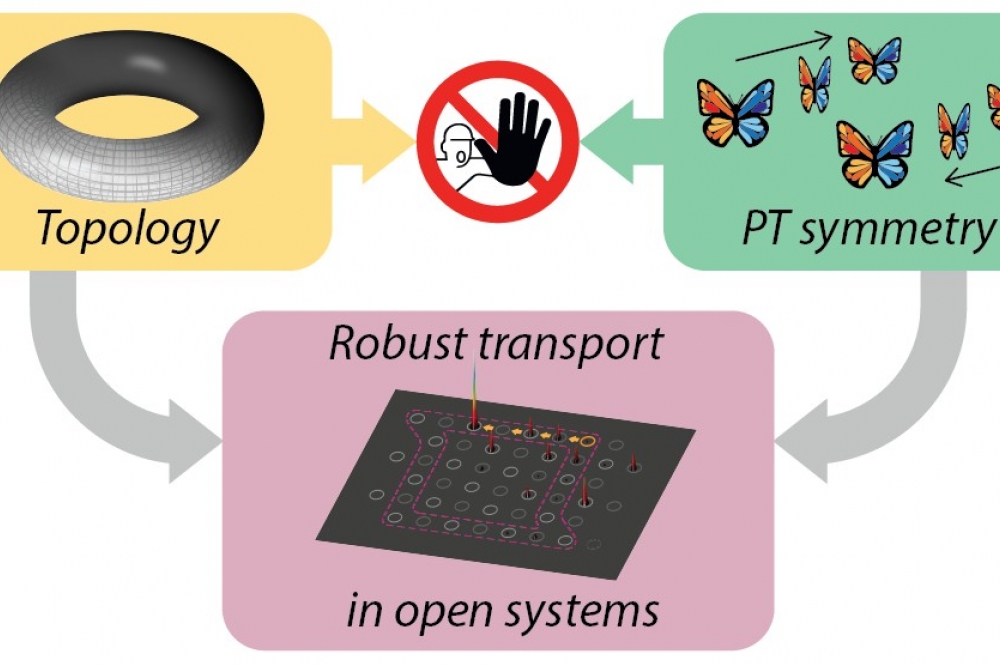Photonic circuits used to model topological insulators

Provided that energy gains and losses systematically cancel each other out, the boundary states of a topological insulator may be compatible with an open system
A major paradigm in physics is the conservation of energy: while energy may be converted between different forms, the total amount of it is typically assumed to be constant over time. However, the amount of energy within a particular system can change if it interacts with its environment, either gaining energy from it or losing energy to it. For this reason, physicists often go to great lengths to ensure that the system they are trying to describe does not interact with its environment.
Yet, as it turns out, the dynamics of a system can also be stable if its energy gains and losses are distributed in a systematic fashion such that they cancel each other under all conceivable conditions, which can be ensured by so-called parity-time (PT) symmetry; when simultaneously exchanging gain and loss, and mirroring the geometric arrangement of its components, the system appears unchanged. Far from being a purely academic notion, PT symmetry has paved the way for a deeper understanding of open systems.
The physical phenomena associated with PT symmetry are the specialty of Alexander Szameit, professor of physics at the University of Rostock. His research group harnesses laser-inscribed photonic waveguides as “circuits for light” to explore the dynamics of discrete systems. In their custom photonic chips, laser light can mimic the behaviour of natural and synthetic materials alike, making them an ideal testbed for a large variety of physical theories.
In this vein, the scientists managed to combine PT symmetry with the concept of topology. “Topological insulators have attracted a lot of attention in the last years because of their fascinating ability to convey a lossless stream of electrons or light along their boundary,” explains Szameit. “The unique capability to suppress the impact of defects and scattering makes them especially interesting for all kinds of technological applications.”
Yet, until now, such robust boundary states were thought to be fundamentally incompatible with open systems. In their new paper, the researchers from Rostock, Würzburg and Indianapolis showed that this apparent paradox can be resolved by distributing gain and loss dynamically in time.
Alexander Fritzsche, first author of the study, elaborates: “The light propagating along the boundary of our open system is like a hiker traversing mountainous terrain. Despite all ups and downs, they will inevitably end up back at the initial elevation. Similarly, the light propagating within the protected edge channel of our PT-symmetric topological insulator will never be exclusively amplified or damped, and can therefore retain its amplitude on average while enjoying the full robustness afforded by topology.”
According to the researchers, these findings constitute an important contribution to the fundamental understanding of topological insulators and open systems, and may pave the way for a new generation of advanced circuits for electricity, light, or even sound waves.



































